Lake Maggiore is the second largest Italian lake, offers a multitude of things to see and is the perfect setting for...
FOLIAGE 2021: 3 MOTORCYCLE ITINERARIES CHOSEN AMONG THE AUTUMN COLORS OF ITALY
FOLIAGE 2021: 3 MOTORCYCLE ITINERARIES CHOSEN AMONG THE AUTUMN COLORS OF ITALY
There are plenty of autumn motorbike itineraries, both in Italy and across the border. There is only one thing in common: the Foliage. These weeks are the perfect time to discover the magical and dynamic shades of the leaves ranging from green to red, from yellow to orange, giving landscapes and vegetation a completely unique effect, with warm and bright colors. More and more motorcyclists choose this period for motorcycle tourism, take some time and take a ride on two wheels. On the one hand, less crowded places, lower prices and a sparkling but mild climate; on the other, less busy roads that allow you to enjoy the view at 100%, bending between one curve and another.
Our country boasts extraordinary locations and landscapes - to say the least fairytale - in the autumnal context of the Foliage. So which one to choose? Hard choice. If on the one hand the Abruzzo National Park, the Ferret Valley in the Aosta Valley, the fantastic alpine scenery of the Non Valley and Funes, the Piedmontese Langhe or the Panoramica Zegna are sure trump cards, we at Roadsitalia will guide you towards something less popular but still not to be missed. That is why on this occasion we decided to choose 3 motorcycle itineraries, one in the north, one in the center and one in southern Italy. Let's get on the saddle and go to cover them in detail.
.
NORTH - MOTORBIKE ITINERARY TO SARTIRANA LAKE
Our first motorcycle tour extends through the streets of Lombardy, more precisely in the municipality of Merate. During autumn, the lake is usually considered a melancholy stage but Lake Sartirana - within a protected nature reserve - instead offers an enchanting spectacle. Ideal for a day - to switch off - or for a weekend, the motorbike ride to Lake Sartirana will not take much time on the saddle because a large part of the day will be dedicated to visiting the reserve. It starts from the Monza Park, another Lombard green lung which during the autumn offers scenographic color combinations and where it is occasionally possible to have fun for a breathtaking lap on the F1 circuit. Following the SP45 you enter the A51 towards Vimercate and continue for the whole route, crossing the SP342. You reach Merate, and in a few curves you arrive at the Sartirana Lake Nature Reserve. Suitable for those who love trips to uncrowded places (because it is less known by mass tourism), it offers a naturalistic ring route around the lake, surrounded by woods and great biodiversity, waters covered by water lilies and total tranquility, perfect for a picnic and many photos where you can immortalize the typical foliage of the reserve.
.
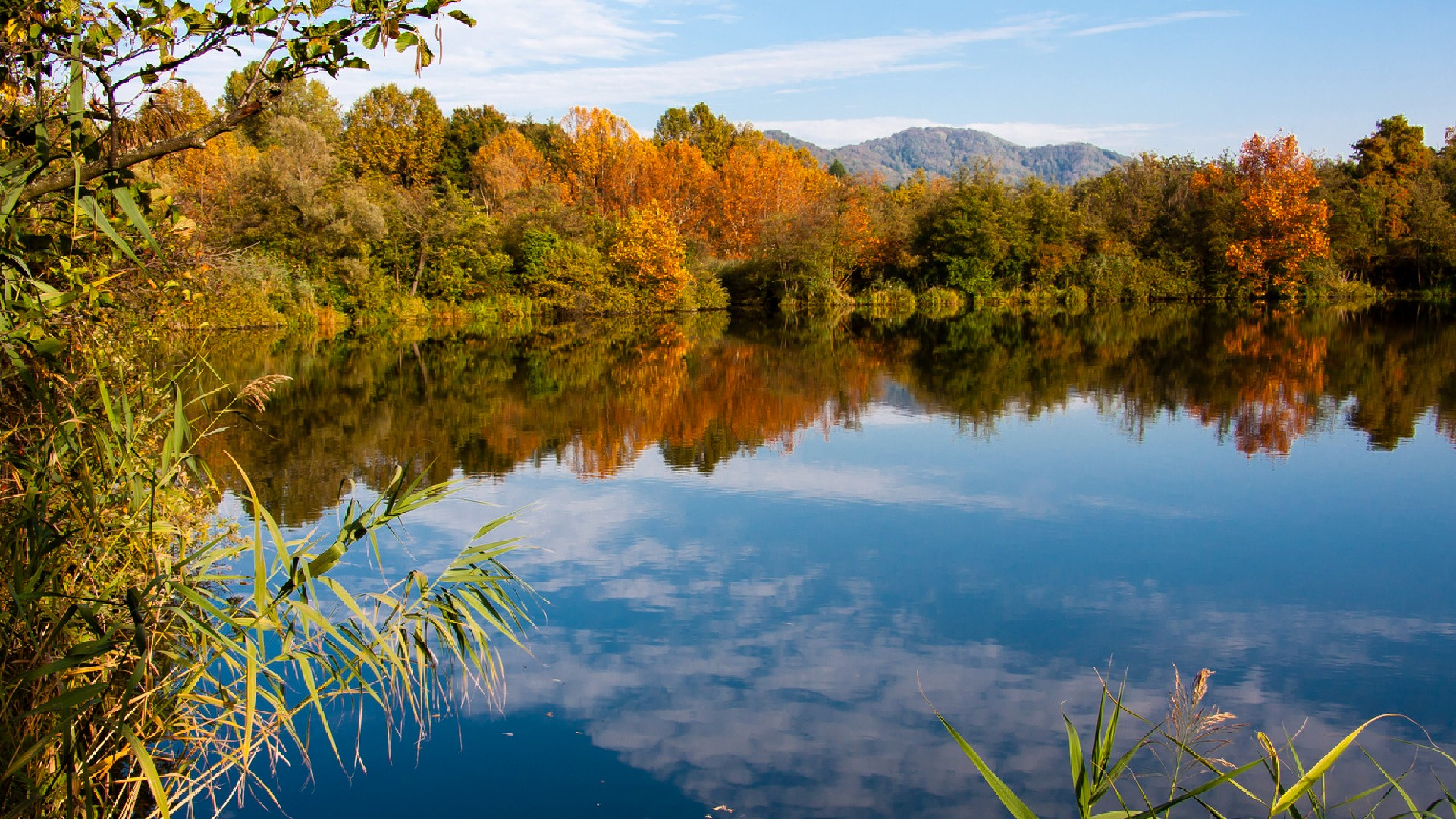
.
If you don't have enough, you can still indulge yourself in the nature of the North Adda Park and the Montevecchia Park or the Curone Valley in the extreme vicinity. From here, it is possible to get back on the saddle, cross the Adda on the famous Ponte San Michele and reach the Crespi d'Adda village along the SP170. Son of the industrial revolution and the idea of an "ideal city of work" at the end of the 19th century, Crespi d’Adda is a garden city on the border between the peasant and industrial world. Built from scratch by the owner of the factory (the Crespi - a well-known family of Lombard cotton makers) for his employees and their respective families, it has become a Unesco Protected World Heritage Site for some years.
.
.
CENTER - MOTORBIKE ITINERARY IN VAL D'ORCIA
We leave a Unesco Heritage to start again from another enchanted place, itself a UNESCO World Heritage Site since 2004. Experiencing the thrill of a motorbike ride in Val d'Orcia during the autumn foliage is another "must-to-do" to note into the notebook of a real motorcyclist. We are in the province of Siena, in the Tuscan hinterland flush with the Umbrian territory: a context made up of gentle ups and downs, undemanding hairpin bends and sinuous curves, where the road is perfectly set in the natural environment. It starts south of Siena, from Montalcino, one of the most famous villages in Italy for the production of wine. Spectacular village surrounded by medieval walls and dominated by an imposing castle, Montalcino has kept the same structure since the 16th century and is surrounded by sinuous hills. Taking the SP14, you pass through the famous cypresses of San Quirico d’Orcia, and then arrive at the village of the same name. San Quirico is another splendid medieval village of Etruscan origins, surrounded by the Sienese hills and picturesque views (famous crossing point of the Via Francigena). Once back on the saddle, we now follow the provincial road 146 towards Pienza, the “ideal city” according to fifteenth-century principles. Here the Duomo and the Church of San Francesco, Piccolomini Palace and Borgia Palace are worth a visit. Its historic center is balanced and highlights the study made of the urban space, concretized in its maximum in the splendid trapezoidal square Pio II Square.
.
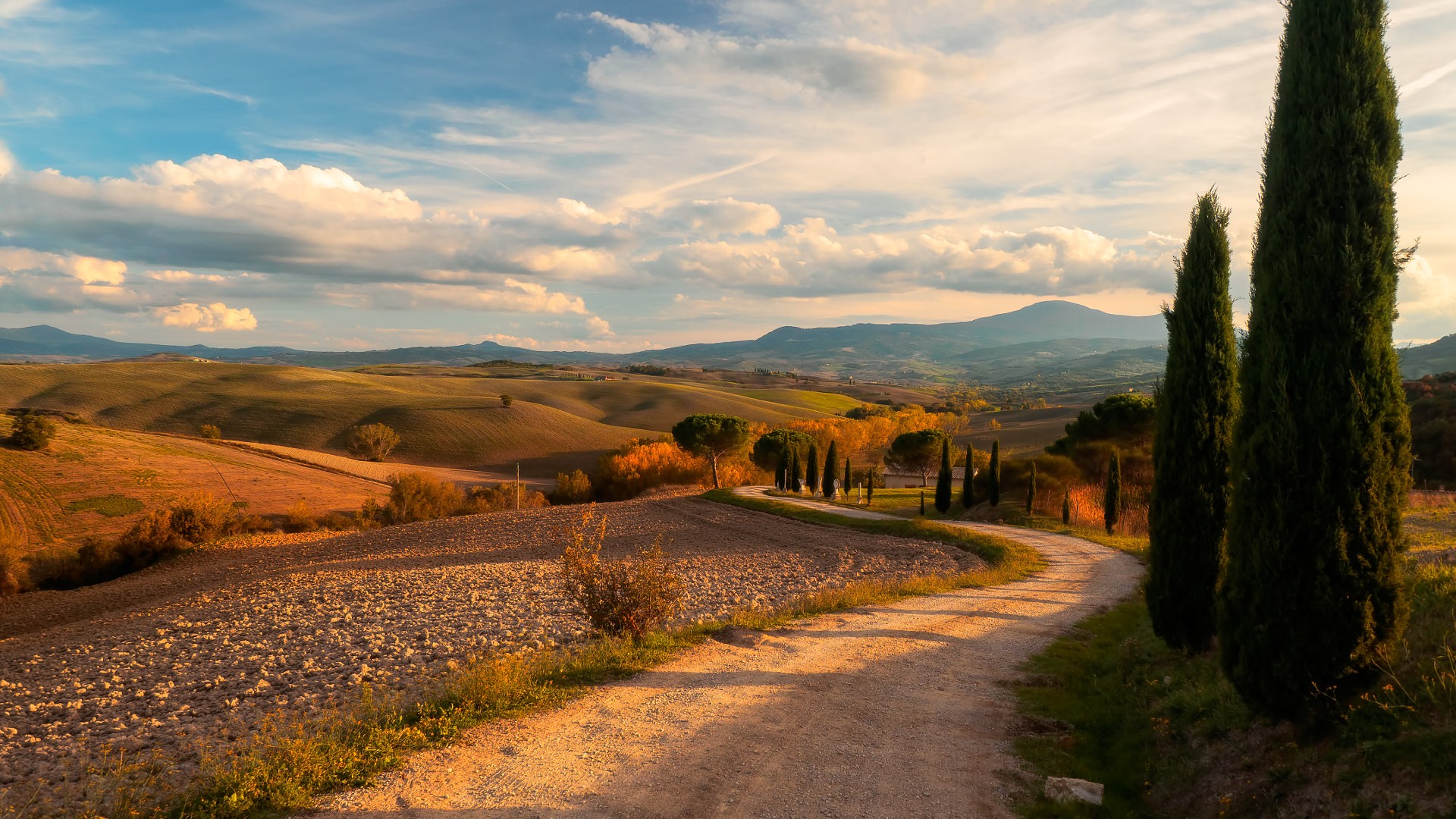
.
We are halfway there. Once back in the saddle, we follow the SP18 and SP53 towards Castiglione d’Orcia, one of the most panoramic points of the entire Val d’Orcia. Its village has a thousand-year history and is also a crucial point of the Via Francigena. Its discovery usually starts from the nearby hamlet of Rocca d’Orcia and its Rocca di Tentennano, one of the highest spots at 360 degrees to admire the autumn colors of the Val d’Orcia foliage. The municipality of Castiglione also boasts other uniqueness such as the Rocca di Campiglia d’Orcia, the Eremo del Vivo d’Orcia and the thermal waters. In summer, these small alleys are almost taken by storm for the famous "Festival of croutons and handmade pici" in August.
Last stop - but not least - is Radicofani, a little further south and reachable via the SR2. Already visible from a distance due to its tower, Radicofani stands in a panoramic position (about 800 meters) on the southern border of the Val d’Orcia. The village offers a wide view that sweeps across the valley and goes from Monte Amiata to Lake Bolsena and Trasimeno. The Rocca is the symbol of Radicofani and has represented for centuries an important control point along the Via Francigena and on the borders between the Grand Duchy of Tuscany and the Papal State. Travel tip: the suggestions on what to see in Val d’Orcia in autumn are almost endless and do not deserve to be summarized in a single post. Having said that, Roadsitalia's first advice is to enjoy it while traveling.
.
.
SOUTH - MOTORBIKE ITINERARY IN THE VILLAGES OF MATESE
Last itinerary, with a very particular taste: a ride on two wheels among the villages of the Matese. The goal is to ride by motorbike the suggestive Campania villages, stop and visit its beauties and arrive at the Matese Massif. Here too - as in previous motorcycle tours - think not about the destination itself but about how to get there. Allowing yourself tempting stops to stroll and visit villages, eat local and take panoramic photos is in the perfect "Slow-travel" context.
Our route starts from the village of Pietramelara, one of the most beautiful in the Caserta area. We are on the slopes of Mount Maggiore, among the irregularly shaped alleys and squares of an ancient medieval village in Campania. From here we continue to Pietravairano, a town with a stepped structure between the eastern slopes of Mount Caievola, reminiscent of a gigantic and suggestive nativity scene. Worthy of note here are the Sanctuary of Santa Maria della Vigna and the theater-temple of the Roman era on Mount San Nicola, outside the town and reachable by a suggestive nature trail. Turned the motorbike back on, the longest and spectacular - from a landscape point of view - journey awaits us, especially if characterized by autumnal colors.
.
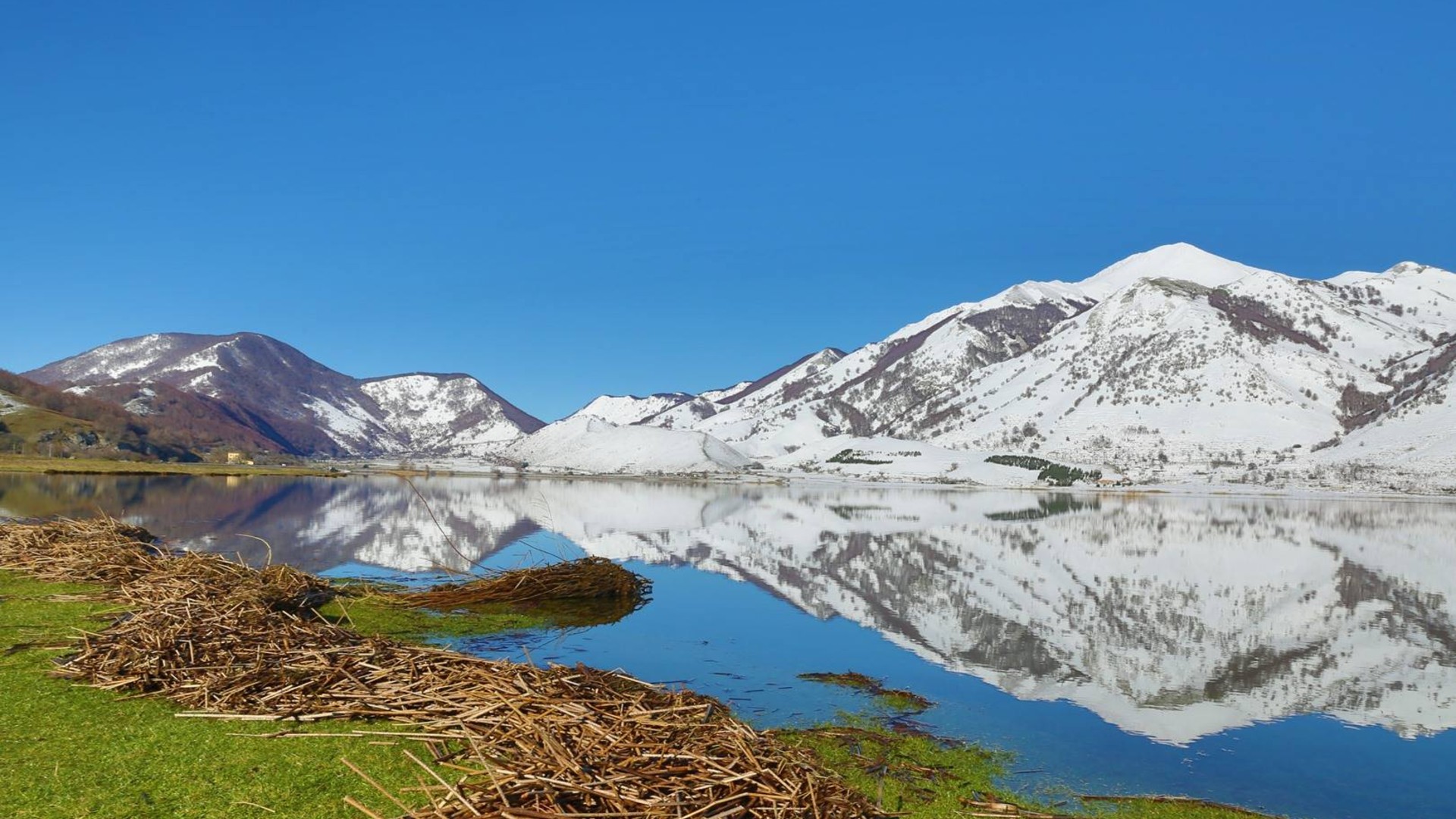
.
Intermediate destination is Roccamandolfi, which became famous for one of the first Tibetan bridges set up in Italy. An Italian town with less than a thousand inhabitants and of presumed Lombard origin (from the name), it has houses perched around the church, small fountains here and there and the characteristic arcades of a Molise village. Among its streets - still irregular and cobbled - the Sanctuary of San Liberato, the parish church of San Giacomo Maggiore and the natural area of the Callora Stream in the surroundings are worth a visit.
We are at the halfway point. Last two stages, Campitello Matese and Piedimonte Matese. Campitello is a typical mountain place, famous for ski lovers, but also for walks through very different paths and landscapes, in close contact with nature. The symbol of Campitello is the Matese Massif, an enormous limestone system with a strong geological value in which there are various karst phenomena, which means irregular profiles of the mountains, surrounded by sinkholes, chasms, caves, sinkholes with courses of water that disappear and reappear on the surface. Piedimonte Matese instead (reachable with the SP106), is a city that is still unspoiled and full of artistic treasures as evidence of its glorious past. Do not miss the Ducale dei Gaetani d’Aragona Palace and the countless churches and convents nearby. And you? Have you ever traveled one of these autumn itineraries by motorbike in the period of foliage? Tell us about your experience below, with some comments or photos of your trip.
.

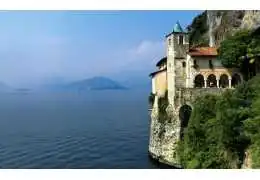
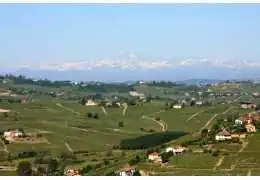
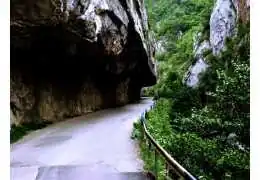
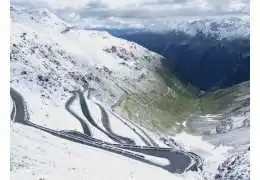
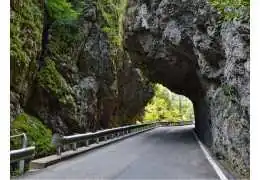

Leave a comment